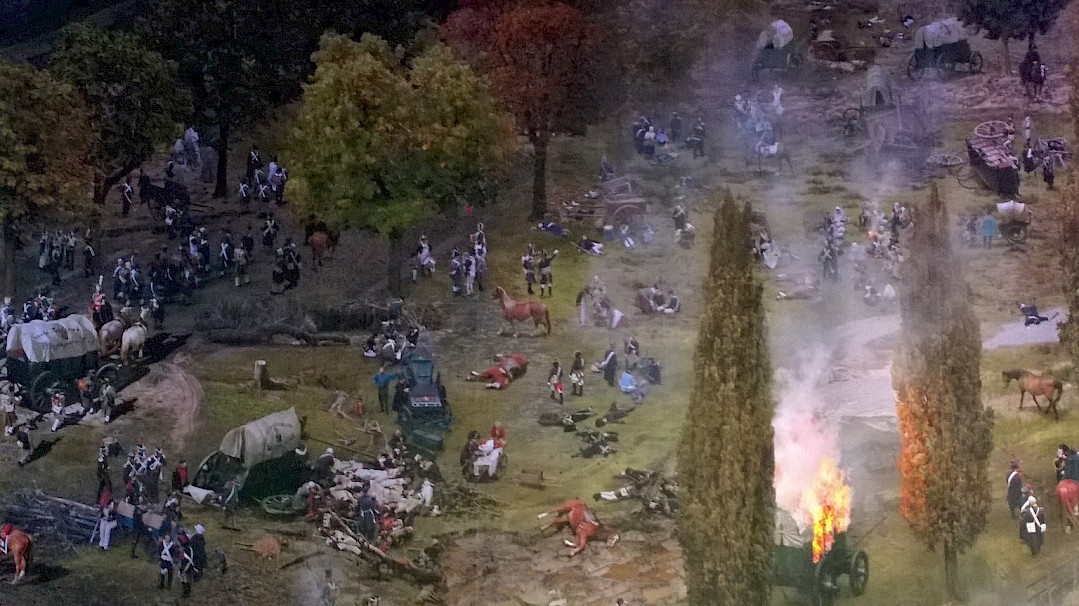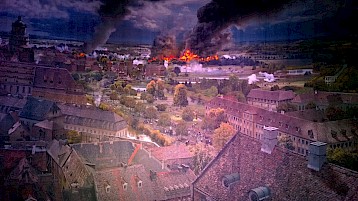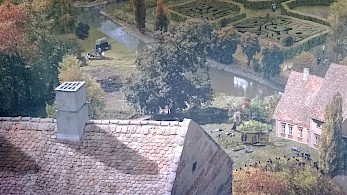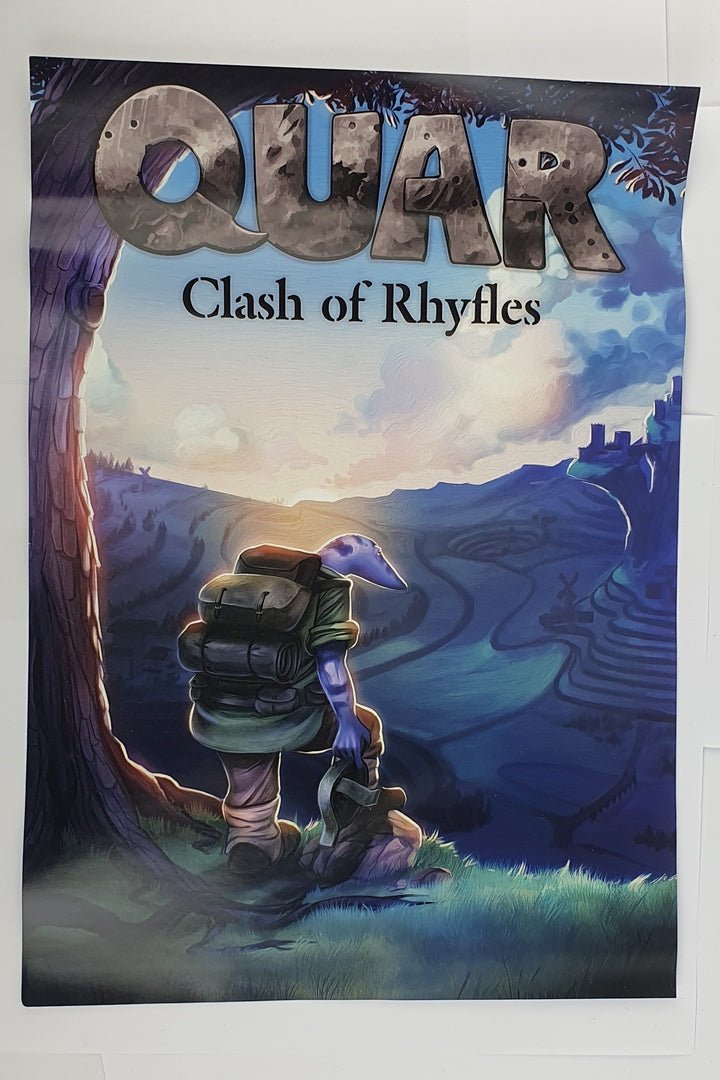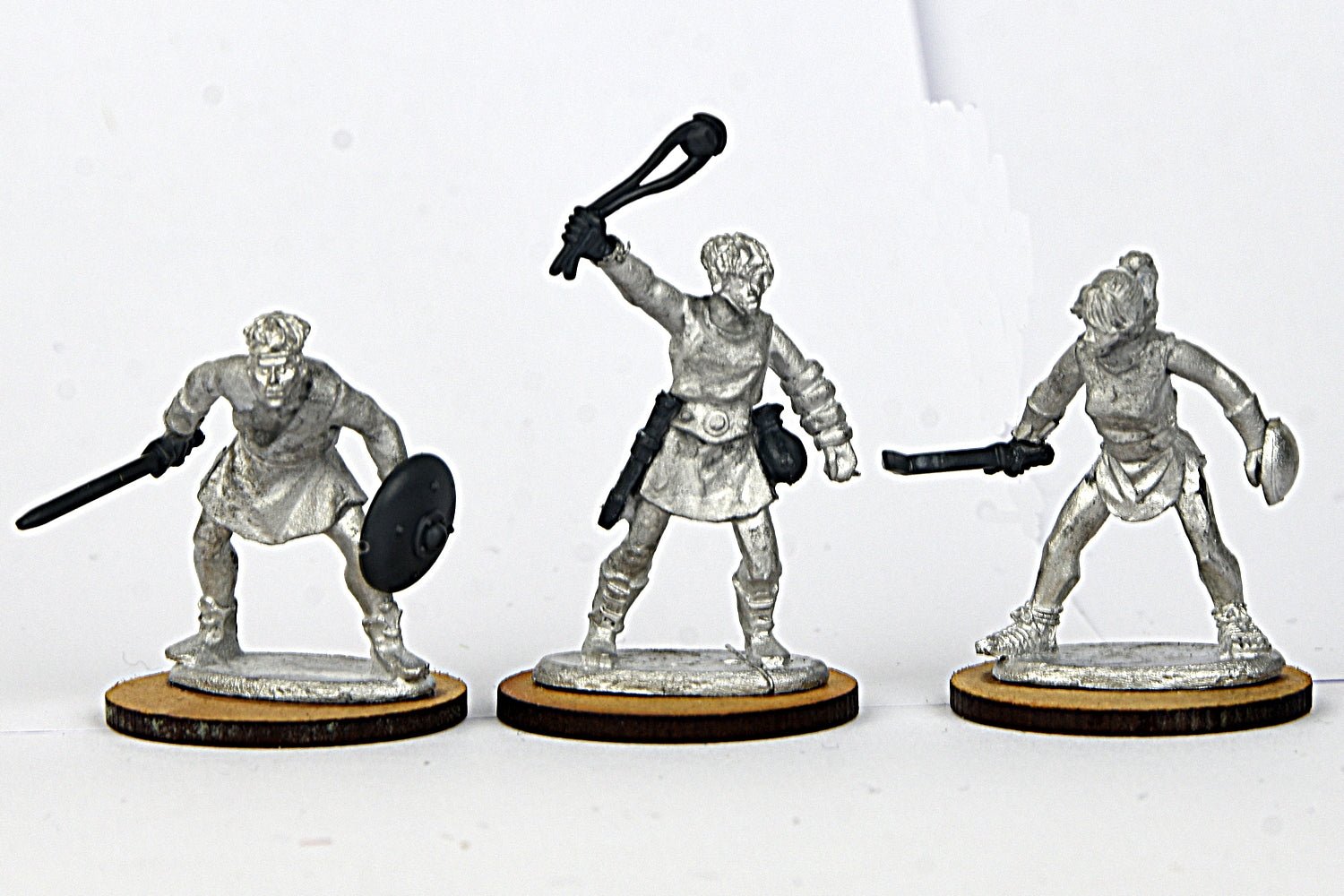Leipzig Panometer
For the third year, I’ve returned to the Wave Gotik Treffen festival in Leipzig. It is an amazing alternative music festival with 221 bands this year and many supporting attractions (discos, cabaret, film, exhibitions etc). There are some 30,000 like minded people here for the music. You can wear any colour you like, as long as it’s black… However I’m not just here for the music, I’m here for the history. This year marks the 1000th anniversary of Lepizig’s founding in 1015. There is also the battles of Leipzig, in 1642 (the Second Battle of Breitenfeld), in 1813 (the Battle of Nations) and 1945 (when the US 69th Division took the city).
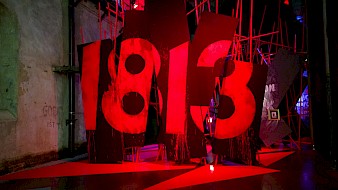 I must admit my ignorance of the Thirty Years War and 1945 battles, but I have learnt a great deal about the Battle of Nations. When I learnt of an exhibition at the Leipzig Panometer, I simply had to go (dragging my understanding girlfriend Emma with me). The sight was amazing and I’ll be frank, my pictures simply do not give the exhibition justice.
I must admit my ignorance of the Thirty Years War and 1945 battles, but I have learnt a great deal about the Battle of Nations. When I learnt of an exhibition at the Leipzig Panometer, I simply had to go (dragging my understanding girlfriend Emma with me). The sight was amazing and I’ll be frank, my pictures simply do not give the exhibition justice.
So what is a panometer? The exhibition is one huge circular panoramic artwork spanning the inside of an old gasworks tower - it has a diameter of 57 metres and a total height of 49 metres. Imagine a 360 degree panoramic picture on the inside of a really huge cylinder. There is a tower in the centre of the panometer which you can climb to get a better view of the entire artwork from different angles. The scene is a reconstruction of the French withdrawal from Leipzig and shows the final hours of the French army in the city.
The huge scene uses perspective distortion to create space and depth. Light and sound effects of the battle with a simulated day-night cycle add to the spectacle. Wherever you look in this huge circular artwork, there is an amazing amount of hidden detail. Battles in the distance, battles in the streets, casualty stations, retreating troops and the civilians of Leipzig trying to keep out of the way.
Most of the exhibition outside the panometer was in German with a summary in English. However I still gleamed some useful information, for example the defences of Leipzig were near non-existent and greatly neglected so the actual walls of the city were not much of an obstacle to allied troops. It was also very cool to see the accurate reconstruction of what the city would have looked like at the time.
The exhibition is on until the 20th September 2015. There are other panometers around Germany showing subjects as varied as the Berlin wall (Berlin), Dresden 1945 (Dresden) and Rome in 312AD (Rouen). If you happen to be in the area do check them out.

